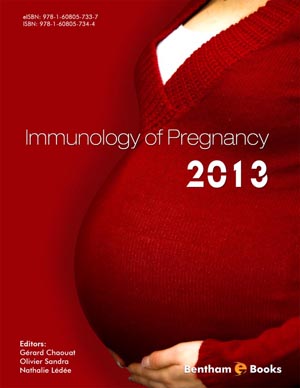Abstract
Fetal-derived trophoblast cells are in contact with maternal immune cells in the human placenta, constituting the maternal-fetal interfaces. In contrast to most somatic cells, the different trophoblast subpopulations are devoid of polymorphic HLA-A and HLA-B expression whereas extravillous cytotrophoblast that invade the decidua basalis and spiral arteries in early pregnancy express HLA-C as well as the non polymorphic HLA-E, HLA-F and HLA-G. This unique pattern of HLA class I expression results in crucial functional consequences. Corresponding specific receptors for HLA-C (killer immunoglobulin-like receptors, KIR), HLA-E (CD94/NKG2A and CD94/NKG2C) and HLA-G (CD8, LILRB1, LILRB2, KIR2DL4, CD160) are present at different levels in decidual NK cells, macrophages and/or several other immune or non-immune cells. Maternal activating KIRs present on decidual NK cells exert a protector effect against human reproductive failure mediated by fetal HLA-C2. HLA-E, by interacting with CD94/NKG2C activating and/or CD94/NKG2A inhibitory receptors present on decidual NK cells contributes to modulate the combined signals mediated from multiple other activating and inhibitory receptors present at their cell surface. HLA-G unique structural features explain why HLA-G acts differently to other HLA class I molecules. Controversies on the expression of the different forms of HLA-G in the trophoblast are presented. Membrane and soluble HLA-G expressed by trophoblast interact locally with a number of receptors present on various maternal decidual cells. Such specific ligations modulate local cytokine, chemokine and angiogenic factor secretion that are likely to contribute to the good outcome of placental development and pregnancy. HLA-F binds to LILRB1 and LILRB2 receptors. HLA-F-2-microglobulin complex physically interacts in trans with MHC Class I heavy chains in an open conformer form, suggesting a possible role as chaperone to stabilize MHC Class I expression in the absence of peptides
Keywords: Beta 2-microglobulin, Cytotrophoblast, decidua basalis, HLA-C, HLA-E, HLA-F, HLA-G, KIR, MHC, NK cells, NK cell receptor, preeclampsia, syncytiotrophoblast.






















